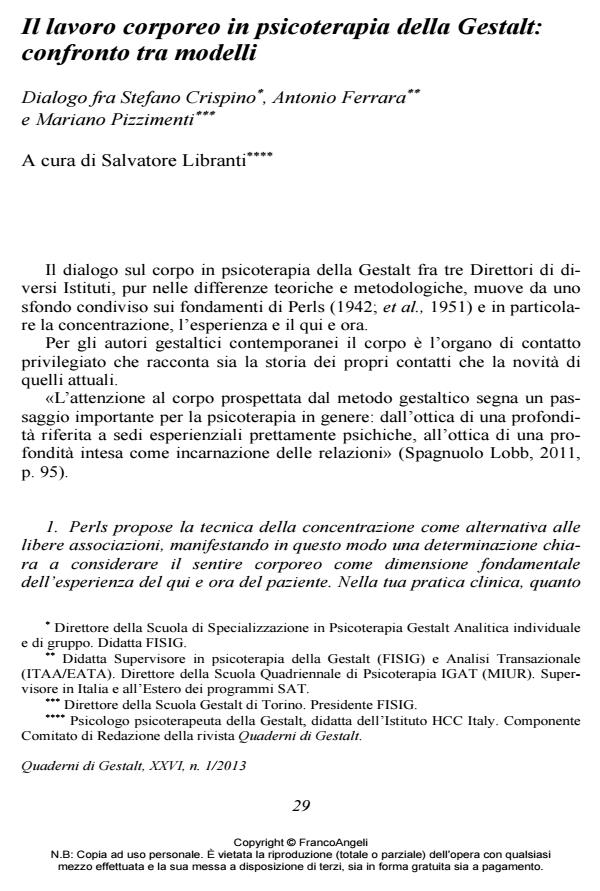Body work in Gestalt Therapy: comparison between models
Journal title QUADERNI DI GESTALT
Author/s Salvatore Libranti, Stefano Crispino, Antonio Ferrara, Mariano Pizzimenti
Publishing Year 2013 Issue 2013/1
Language Italian Pages 11 P. 29-39 File size 490 KB
DOI 10.3280/GEST2013-001003
DOI is like a bar code for intellectual property: to have more infomation
click here
Below, you can see the article first page
If you want to buy this article in PDF format, you can do it, following the instructions to buy download credits

FrancoAngeli is member of Publishers International Linking Association, Inc (PILA), a not-for-profit association which run the CrossRef service enabling links to and from online scholarly content.
This is an interview to S. Crispino, A. Ferrara and M. Pizzimenti, founders of three Gestalt schools, highlighting the differences among them in the theory and methodology concerning body work in psychotherapy. Starting from the shared background of work on concentration and experience of here-and-now, the three leaders resort to relevant clinical examples for showing the thought, interventional methods and didactics they propose.
Keywords: Body in Gestalt psychotherapy, differences, shared background, concentration, experience, here-and-now
Salvatore Libranti, Stefano Crispino, Antonio Ferrara, Mariano Pizzimenti, Il lavoro corporeo in psicoterapia della Gestalt: confronto tra modelli in "QUADERNI DI GESTALT" 1/2013, pp 29-39, DOI: 10.3280/GEST2013-001003